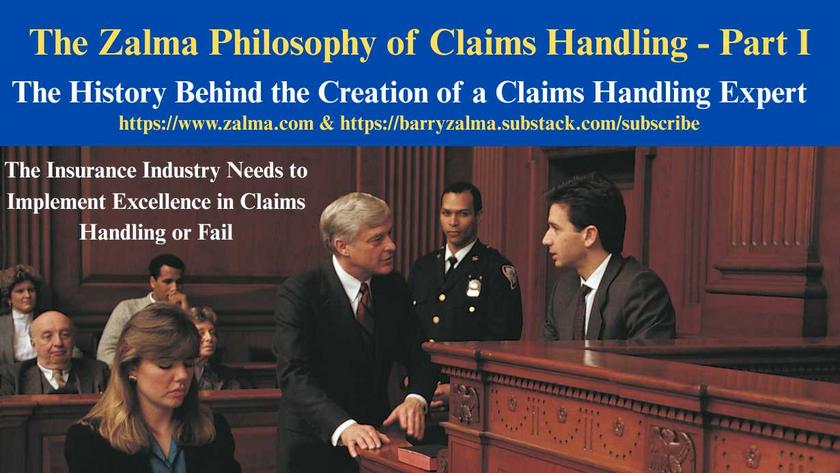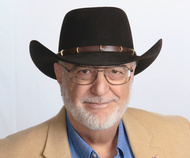
Fairly Debatable Claim Defeats Charge of Bad Faith
Read the full article at https://lnkd.in/g-aJUxWC, see the full video at https://lnkd.in/gvCNiYcX and at https://lnkd.in/gwub42pS and https://zalma.com/blog plus more than 4750 posts.
Post 4794
On May 7, 2019, Saddletree Holding, LLC (Saddletree) filed an insurance claim for damages sustained to its building located in Upton, Wyoming (the Building). The Building was used as a community events center. Following a winter of heavy snowfall, Saddletree discovered that the Building’s steel support columns had buckled two or more inches and the roof had deflected downward approximately six inches. The Building was insured by Evanston; Markel was the claims processor.
In Saddletree Holding, LLC v. Evanston Insurance Company; Markel Service, Inc., No. 23-8024, United States Court of Appeals, Tenth Circuit (April 30, 2024) the Tenth Circuit ruled on the breach of contract and bad faith suit filed by Saddletree.
The claims were denied for damages Saddletree claimed to its building in eastern Wyoming. Saddletree sued seeking damages for (1) breach of contract, (2) substantive bad faith, and (3) procedural bad faith.
The district court entered judgment in favor of Evanston and Markel and dismissed the case with prejudice. Saddletree appealed.
BACKGROUND
During claims processing, Defendants retained an engineer who inspected the Building. Defendants’ engineer determined that the damage was the result of the Building’s inadequate “design[] and/or construct[ion].” Evanston disclaimed coverage pursuant to a Policy exclusion precluding damage caused by “hidden or latent defect[s]” or “any quality in property that causes it to damage or destroy itself.”
Saddletree did not contemporaneously contest the denial. Instead, it sued its builder, Dreams Carports &Buildings, Inc. To support that suit, Saddletree requested Defendants turn over their engineering report. They declined. So, Saddletree retained its own engineer, who “determined that the original design is deficient[.]” Saddletree’s engineer also noted “[i]t is very fortunate the structure has not collapsed based on the levels of deficiencies determined.” (emphasis added). On March 23, 2021, the district court entered default judgment against Dreams and awarded Saddletree over $2.2 million in damages, a judgment that Saddletree is still attempting to collect.
The district court entered summary judgment for Defendants on all of Saddletree’s asserted claims.
ANALYSIS
Saddletree does not dispute that its claim of breach fell outside the Policy’s two- year limitations period. Instead, it argued Defendants were either estopped from raising the limitations defense or waived it. The argument failed for several reasons:
1. It is directly contradicted by the record: Saddletree testified it had “no idea” what it would have done differently had it received Defendants’ engineering report sooner. That makes sense, since its own report provided all the information it needed to pursue its collapse theory against Defendants within the limitations period.
2. Saddletree did not identify any authority indicating Defendants had a duty to provide their engineering report. Absent an affirmative duty to provide the report, Defendants did not act inappropriately in refusing to provide it, and that refusal did not lead to estoppel.
Defendants are entitled to rely on the Policy’s two-year limitations period. The district court correctly entered summary judgment for Defendants.
SUBSTANTIVE BAD FAITH
The test used in determining whether a claim was denied in bad faith is an objective one which questions whether the validity of the denied claim was not fairly debatable. A claim is fairly debatable when a reasonable insurer would have denied or delayed payment of benefits under the facts and circumstances. If a realistic question of liability does exist, the insurance carrier is entitled to reasonably pursue that debate without exposure to a claim of violation of its duty of good faith and fair dealing. In pursing that debate, an insurer is entitled to rely on the conclusion of independent experts unless there is a showing that there was collusion between the experts and the insurer or that the experts knowingly made false reports.
By the Policy’s terms, coverage does not apply to a building that is standing even if it is “cracking, bulging, sagging, bending, [or] leaning ….”
Defendants’ expert provided a supplemental report on March 17, 2022, which opined “the yielding and buckling . . . occurred gradually as snow accumulated on the roof and was not an instantaneous or abrupt failure.”
Both because it is “fairly debatable” whether the Building “collapsed” for purposes of coverage, and because Defendants were entitled to rely on their expert engineering report in making their coverage determination, the insurer acted properly and not in bad faith.
Defendants’ conduct did not constitute procedural bad faith as a matter of law and because Saddletree failed to identify recoverable damages necessary to sustain its claim. Therefore, the Tenth Circuit concluded, as a matter of law that the insurer’s conduct failed to exhibit the egregious level of misconduct typifying bad faith.
ZALMA OPINION
The Tenth Circuit could have rejected the appeal on the failure to file suit before the expiration of the private limitation of action provision, alone. Regardless, it also dealt with the claims of bad faith and breach of contract to eliminate all of Saddletree’s claims. Saddletree has a judgment against the builders of the structure and only sued when it found it could not collect the default judgment.
(c) 2024 Barry Zalma & ClaimSchool, Inc.
Please tell your friends and colleagues about this blog and the videos and let them subscribe to the blog and the videos.
Go to X @bzalma; Go to Newsbreak.com https://www.newsbreak.com/@c/1653419?s=01; Go to Barry Zalma videos at Rumble.com at https://rumble.com/c/c-262921; Go to Barry Zalma on YouTube- https://www.youtube.com/channel/UCysiZklEtxZsSF9DfC0Expg.
Go to the Insurance Claims Library – https://lnkd.in/gwEYk.
Please tell your friends and colleagues about this blog and the videos and let them subscribe to the blog and the videos.
Subscribe to my substack at https://lnkd.in/gmmzUVBy
Go to X @bzalma; Go to the Insurance Claims Library – https://lnkd.in/gwEYk.
Detail Charging Defendant for Fraud is Sufficient
Post 5242
Read the full article at https://lnkd.in/g_HVw36q, see the video at https://lnkd.in/gpBd-XTg and at https://lnkd.in/gzCnBjgQ and at https://zalma.com/blog plus more than 5200 posts.
Charges that Advises the Defendant of the Crime Cannot be Set Aside
In United States Of America v. Lourdes Navarro, AKA Lulu, No. 25-661, United States Court of Appeals, Ninth Circuit (December 4, 2025) Lourdes Navarro appealed the district court’s denial of her motion to dismiss the indictment and enter final judgment was in error.
FACTUAL BACKGROUND
The indictment alleged that insurers reimburse only for medically necessary services. Navarro performed unnecessary respiratory pathogen panel (RPP) tests on nasal swabs collected from asymptomatic individuals for COVID-19 screening.
Navarro billed over $455 million to insurers for those additional RPP tests that she knew to be medically unnecessary. These allegations constituted a plain, concise, and definite written ...
Louisiana Statute Prevents Enforcement of Contract Term Requiring Arbitration of Disputes
Post 5241
Read the full article at https://www.linkedin.com/pulse/international-convention-requiring-enforcement-award-barry-sttdc, see the video at and at and at https://zalma.com/blog plus more than 5200 posts.
In Town of Vinton v. Indian Harbor Insurance Company, Nos. 24-30035, 24-30748, 24-30749, 24-30750, 24-30751, 24-30756, 24-30757, United States Court of Appeals, Fifth Circuit (December 8, 2025) municipal entities including the Town of Vinton, et al sued domestic insurers after dismissing foreign insurers with prejudice. The insurers sought arbitration under the Convention on the Recognition and Enforcement of Foreign Arbitral Awards (the “Convention”) but the court held Louisiana law — prohibiting arbitration clauses in such policies—controls, as the Convention does not apply absent foreign parties who ...
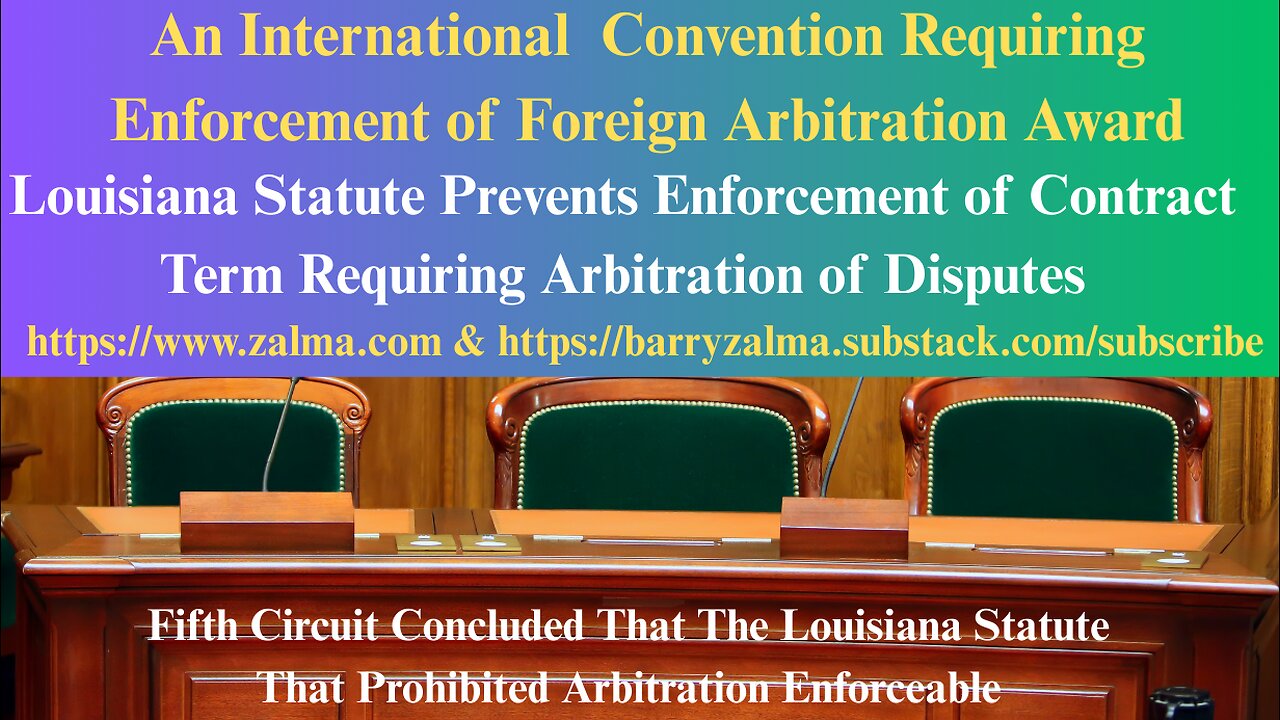
Refusal to Provide Workers’ Compensation is Expensive
Post 5240
Read the full article at https://lnkd.in/guC9dnqA, see the video at https://lnkd.in/gVxz-qmk and at https://lnkd.in/gUTAnCZw, and at https://zalma.com/blog plus more than 5200 posts.
In Illinois Department of Insurance, Insurance Compliance Department v.USA Water And Fire Restoration, Inc., And Nicholas Pacella, Individually And As Officer, Nos. 23WC021808, 18INC00228, No. 25IWCC0467, the Illinois Department of Insurance (Petitioner) initiated an investigation after the Injured Workers’ Benefit Fund (IWBF) was added to a pending workers’ compensation claim. The claim alleged a work-related injury during employment with the Respondents who failed to maintain workers’ compensation Insurance.
Company Overview:
USA Water & Fire Restoration, Inc. was incorporated on January 17, 2014, and dissolved on June 14, 2019, for failure to file annual reports and pay franchise taxes. It then operated under assumed names including USA Board Up & Glass Co. and USA Plumbing and Sewer. The business ...
The Professional Claims Handler
Post 5219
Posted on October 31, 2025 by Barry Zalma
An Insurance claims professionals should be a person who:
Can read and understand the insurance policies issued by the insurer.
Understands the promises made by the policy.
Understand their obligation, as an insurer’s claims staff, to fulfill the promises made.
Are competent investigators.
Have empathy and recognize the difference between empathy and sympathy.
Understand medicine relating to traumatic injuries and are sufficiently versed in tort law to deal with lawyers as equals.
Understand how to repair damage to real and personal property and the value of the repairs or the property.
Understand how to negotiate a fair and reasonable settlement with the insured that is fair and reasonable to both the insured and the insurer.
How to Create Claims Professionals
To avoid fraudulent claims, claims of breach of contract, bad faith, punitive damages, unresolved losses, and to make a profit, insurers ...
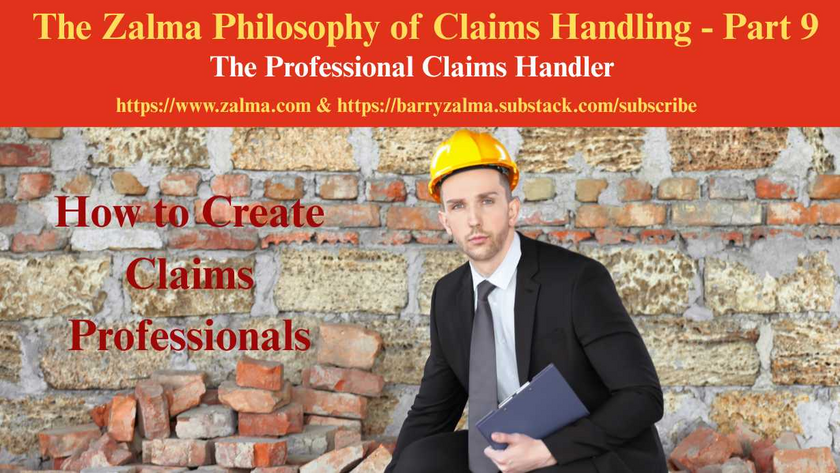
The History Behind the Creation of a Claims Handling Expert
The Insurance Industry Needs to Implement Excellence in Claims Handling or Fail
Post 5210
This is a change from my normal blog postings. It is my attempt. in more than one post, to explain the need for professional claims representatives who comply with the basic custom and practice of the insurance industry. This statement of my philosophy on claims handling starts with my history as a claims adjuster, insurance defense and coverage lawyer and insurance claims handling expert.
My Training to be an Insurance Claims Adjuster
When I was discharged from the US Army in 1967 I was hired as an insurance adjuster trainee by a professional and well respected insurance company. The insurer took a chance on me because I had been an Army Intelligence Investigator for my three years in the military and could use that training and experience to be a basis to become a professional insurance adjuster.
I was initially sat at a desk reading a text-book on insurance ...
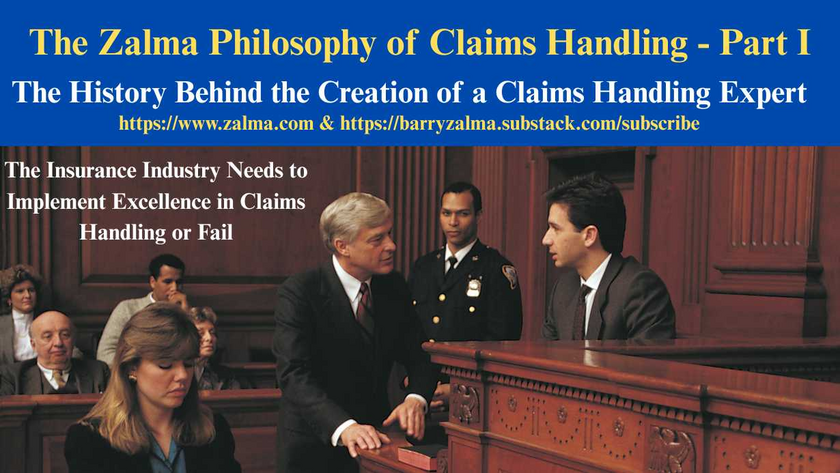
The History Behind the Creation of a Claims Handling Expert
The Insurance Industry Needs to Implement Excellence in Claims Handling or Fail
Post 5210
This is a change from my normal blog postings. It is my attempt. in more than one post, to explain the need for professional claims representatives who comply with the basic custom and practice of the insurance industry. This statement of my philosophy on claims handling starts with my history as a claims adjuster, insurance defense and coverage lawyer and insurance claims handling expert.
My Training to be an Insurance Claims Adjuster
When I was discharged from the US Army in 1967 I was hired as an insurance adjuster trainee by a professional and well respected insurance company. The insurer took a chance on me because I had been an Army Intelligence Investigator for my three years in the military and could use that training and experience to be a basis to become a professional insurance adjuster.
I was initially sat at a desk reading a text-book on insurance ...
